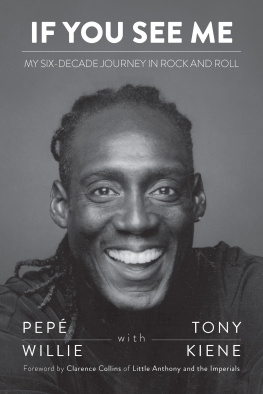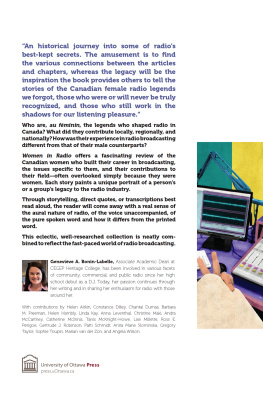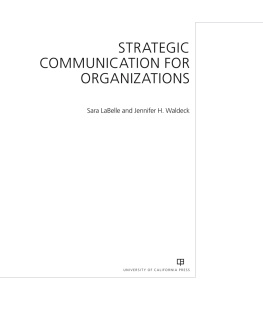
Evelyn McDonnell and Oliver Wang
Series Editors
BOOKS IN THE SERIES
Tanya Pearson, Why Marianne Faithfull Matters
Charles L. Hughes, Why Bushwick Bill Matters
Stephanie Phillips, Why Solange Matters
Fred Goodman, Why Lhasa de Sela Matters
Karen Tongson, Why Karen Carpenter Matters
Tom Smucker, Why the Beach Boys Matter
Donna Gaines, Why the Ramones Matter
WHY LABELLE MATTERS
Adele Bertei

UNIVERSITY OF TEXAS PRESS
AUSTIN
Copyright 2021 by Adele Bertei
All rights reserved
First edition, 2021
Requests for permission to reproduce material from this work should be sent to: Permissions
University of Texas Press
P.O. Box 7819
Austin, TX 78713-7819
utpress.utexas.edu/rp-form
Library of Congress Cataloging-in-Publication Data
Names: Bertei, Adele, author.
Title: Why Labelle matters / Adele Bertei.
Other titles: Music matters.
Description: First edition. | Austin : University of Texas Press, 2021. | Series: Music matters | Includes bibliographical references.
Identifiers: LCCN 2020043588 ISBN 978-1-4773-2040-2 (paperback) ISBN 978-1-4773-2289-5 (library ebook) ISBN 9781477322895 (ebook)
Subjects: LCSH: Labelle (Musical group) | LaBelle, Patti. | Hendryx, Nona. | Dash, Sarah. | Wickham, Vicki. | Girl groups (Musical groups)United States. | Music and raceUnited States. | Sex in music | Afrofuturism.
Classification: LCC ML421.L33 B23 2021 | DDC 782.42166092/2 [B]dc23
LC record available at https://lccn.loc.gov/2020043588
doi:10.7560/320402
for ECSG and spacegirls throughout the galaxies
CONTENTS
PREFACE
Labelle: the beautiful. Say the name Labelle and most neural pathways lead straight to Patti LaBelle, diva extraordinaireas if Labelle, the entity of three, never were. The first all-woman band of rock stars to grace our planet, Labelle were three artists and a silent fourth who, across two decades and seventeen years together, created a legacy unlike that of any other music group before or since. Pattis miraculous voice led the way, undoubtedly. But it was Sarah Dashs vivacious personality and sweet soprano, Nona Hendryxs deeply resonant voice and fiery imagination, and futurist manager Vicki Wickhams vision that would ultimately result in the creation of the Labellian cosmologya space-time map of sonic starlight.
The first group to break away from the traditional girl-group matrix of the 1960s, Labelle reinvented themselves into a thrilling Other. Tired of trying to fit in, they chose to stand out by mixing their gospel roots with electrifying funk, rock, and sounds of New Orleans, topped with lyrics voicing truth to power. Theirs was a banquet of Black female rebellion audiences had been waiting to feast on.
Provoked by manager Vicki Wickham, the bouffant wigs and chiffon girl-group dresses were tossed onto the pyre as Patti, Nona, and Sarah danced over the flames in space-age sartorial glam. Labelles musical juju brought them all the way from playing the sardine houses of the Chitlin Circuit to headlining New York Citys Metropolitan Opera House; they were the first contemporary music act and Black female vocal group to perform at the Met. Labelles carnal sonic combustion on Lady Marmalade brought a New Orleans hooker into nearly every home, club, and corner shop around the world. Americans learned to speak their first words of franais-funk courtesy of Labelle, some unaware they were reciting an invitation to se faire baiser via Voulez-vous coucher avec moi, ce soir? Patti, Nona, and Sarah channeled Lady M.s erotic ferocity in the spirit of Ralph Ellisons Change the Joke and Slip the Yoke, blowing up the racist Jezebel stereotype by flaunting their sexual agency with the roar of a three-headed lioness.
The LP Nightbirds invited us to board the original Mothership, giving preDr. Funkenstein, goddess-style Afronautica in sound and vision. Their music remains a clarion call. To rise above the hypocrisies of American life on the wings of music. To soar into a compassionate and funky galaxy of love-sexy liberation. Their presentation was brand-ass new, brand-spanking funky, and divinely erotic.
Labelle sang the opening aria of Afrofuturism. Aside from the most apparent mentionsOctavia Butler, Alice Coltranethe absence of woman, of her voice in the majority of man-texts on Afrofuturism, is bewildering. Women like Alondra Nelson and Ytasha L. Womack have stepped in to course-correct as important theorists on Afrofuturism and the role Black women have played in its shaping. Thanks to Womacks brilliant primer on Afrofuturism, Ive discovered Nalo Hopkinson and N. K. Jemison (writers of speculative and science fiction), and Afua Richardson, the illustrator who gave us Black Panther: World of Wakanda. If we imagine the presence of ghosts snapping the rubber bands of space and time, might Toni Morrison be thought of as an Afrofuturist? Theres a series of photographs by Waring Abbott of a glowing Morrison dancing at a disco in 1974. Id wager a bet shes dancing to the liberating funk of a track Labelle released that year called Goin on a Holiday. Heading for the hills, where I know Im not the hunted prey.
Does the female voice, at the height of its erotic power in/on the body and its ability to soar through skins and time, scare the male intellect into its omission?
Sunday, February 16, 1975A Journey Backward
Im standing in the lobby of an opulent jewel box built in the 1920s: Clevelands Allen Theater. Designed in the Italian Renaissance style to resemble Romes Villa Madama, the dramatic venue is a match for what will be one of the most extraordinary theatrical experiences of my life. I take in the room and the excitable crowd on parade, all following the advertised edict of the Nightbirds show to Wear Something Silver. If your spaceship happened to land here this night, youd never imagine Cleveland as segregated; the two-thousand-plus crowd is equally mixed, and the only tension I feel is the anticipation of the show were about to witness. Silver-clad bodies pose, connect, laugh. Admire one another coiffed in mylar, shiny satin, sequined tulle, silver-sprayed leather, and platinum jewelry fit for Venetian and Caribbean Carnival. A gent in white leather chaps cupping silver-painted butt cheeks saunters past a gorgeous young androgyne, face smeared in hot pink and speckled with stars. They bump into me, blow a kiss. I see smiles of admiration for metallic blue complementing silver antennae on an Amazonian space queen. Im sporting DIY silver cuffs and an Egyptian-style collar, both fashioned out of tin foil and cardboard. My blue satin hot pants, silver glitter platforms, and orange mullet are holdovers from Bowies Diamond Dogs floor show, June of 1974. The Black fantastic was not in attendance for the Bowie show, but tonight is a celebration of a new and different hue.
As the ushers ring the curtain bell, bodies rush, misting the floor with silver dust. The lights dim, but none of us can sit, nerves wound tight with anticipation... and then, a piano, intro notes playing softly as a circle of light grows to reveal a woman-creature inside its glow. Shes covered in alien space-age suiting and feathers, alone in the spotlight. Sarah begins to sing high and pure, Nightbird fly by the light of the moon... shes flying high and all alone. Suddenly, to Sarahs right, night-bird Nona descends from above on wires, an Afronaut deity from space touching down to join Sarah in a cradle of warm harmony, returning from a galaxy unknown. We catch our collective breath as another body, a winged creature, emerges from on high. Nearly concealed in a cage made of trembling feathers, a wingspread capable of enfolding us all begins to unfurl to reveal Patti. When she alights onto the stage and turns to face us, the three lock their voices into harmony and the crowd erupts.







